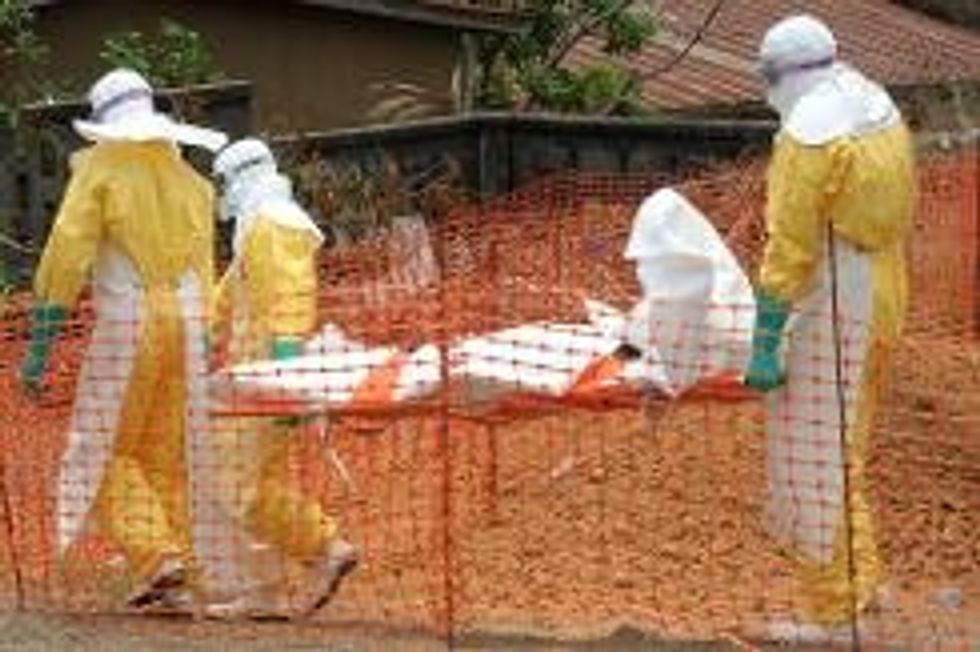Another Ebola Challenge: Disposing Of Medical Waste
By Monte Morin, Los Angeles Times
A single Ebola patient treated in a U.S. hospital will generate eight 55-gallon barrels of medical waste each day.
Protective gloves, gowns, masks and booties are donned and doffed by all who approach the patient’s bedside and then discarded. Disposable medical instruments, packaging, bed linens, cups, plates, tissues, towels, pillowcases, and anything that is used to clean up after the patient must be thrown away.
Even curtains, privacy screens, and mattresses eventually must be treated as contaminated medical waste and disposed of.
Dealing with this collection of pathogen-filled debris without triggering new infections is a legal and logistical challenge for every U.S. hospital now preparing for a potential visit by the virus.
In California and other states, it is an even worse waste-management nightmare.
While the U.S. Centers for Disease Control and Prevention recommend autoclaving (a form of sterilizing) or incinerating the waste as a surefire means of destroying the microbes, burning infected waste is effectively prohibited in California, and banned in several other states.
“Storage, transportation, and disposal of this waste will be a major problem,” California Hospital Association President C. Duane Dauner warned U.S. Sen. Barbara Boxer, D-Calif., in a letter last week.
Even some states that normally permit incineration are throwing up barriers to Ebola waste.
In Missouri, the state attorney general has sought to bar Ebola-contaminated debris from a St. Louis incinerator operated by Stericycle Inc., the nation’s largest medical waste disposal company.
Due to restrictions on burning, California hospital representatives say their only option appears to be trucking the waste over public highways and incinerating it in another state — a prospect that makes some environmental advocates uneasy.
Under federal transportation guidelines, the material would be designated a Class A infectious substance, or one that is capable of causing death or permanent disability, and would require special approval from the Department of Transportation, hospital representatives say.
“These are some pretty big issues and they need some quick attention,” said Jennifer Bayer, spokeswoman for the Hospital Association of Southern California.
“We fully expect that it’s coming our way,” Bayer said of the virus. “Not to create any sort of scare, but just given the makeup of our population and the hub that we are. It’s very likely.”
The Ebola virus is essentially a string of genetic material wrapped in a protein jacket. It cannot survive a 1,500-degree scorching within an incinerator, or the prolonged, pressurized steam of an autoclave.
“The Ebola virus itself is not particularly hardy,” CDC Director Dr. Thomas Frieden said under questioning on Capitol Hill recently. “It’s killed by bleach, by autoclaving, by a variety of chemicals.”
However, CDC guidelines note that “chemical inactivation” has yet to be standardized and could trigger worker safety regulations.
California health officials recently tried to reassure residents that the state’s private and public hospitals were up to the task and were actively training for the possible arrival of Ebola.
“Ebola does not pose a significant public health risk to California communities at the present time,” said Dr. Gil Chavez, an epidemiologist and deputy director at the California Department of Public Health. “Let me tell you why: Current scientific evidence specifies that people cannot get Ebola through the air, foo,d or water. … The Ebola virus does not survive more than a few hours on impervious surfaces.”
It was unclear whether California officials viewed the waste issue as a potential problem.
Although a third of the state’s private hospitals and “a few” of its public hospitals reported to Boxer’s office that there would be problems complying with the CDC’s incineration recommendation, and others, a state public health official told reporters he was not aware of any conflicts.
Dr. David Perrott, chief medical officer for the California Hospital Association, said there was also confusion about whether infected human waste could be flushed down the toilet.
“Here’s what we’ve heard from the CDC: It’s OK,” Perrott said. “But then we’ve heard from some sources, that maybe we need to sterilize it somehow and then flush it down the toilet or you have to check with local authorities. It sounds maybe a little gross, but there is a real question about what to do with that waste.”
Dr. Thomas Ksiazek, a professor of microbiology and immunology of the University of Texas Medical Branch, has said he believes there’s been a lot of overreaction on the topic of Ebola medical waste.
“There are other ways to deal with the waste; autoclaving would be chief among them,” Ksiazek said. “The problem is, most hospitals don’t use it for most disposable items. They’re quite happy to bag them up and send them to a regular medical disposal company.”
But Allen Hershkowitz, a senior scientist at the Natural Resources Defense Council, said incineration is simple and effective, and should be available to hospitals to help dispose of the mountain of waste.
Hershkowitz said states began to crack down on medical waste incineration years ago because many materials that did not need to be burned were being sent to combustors and were emitting dangerous pollutants.
In this case of Ebola medical waste, he said California should reconsider its restrictions.
“There’s no pollutant that’s going to come out of a waste incinerator that’s more dangerous than the Ebola virus,” Hershkowitz said. “When you’re dealing with pathogenic and biological hazards, sometimes the safest thing to do is combustion.”
AFP Photo/Seyllou
Interested in more national news? Sign up for our daily email newsletter!




